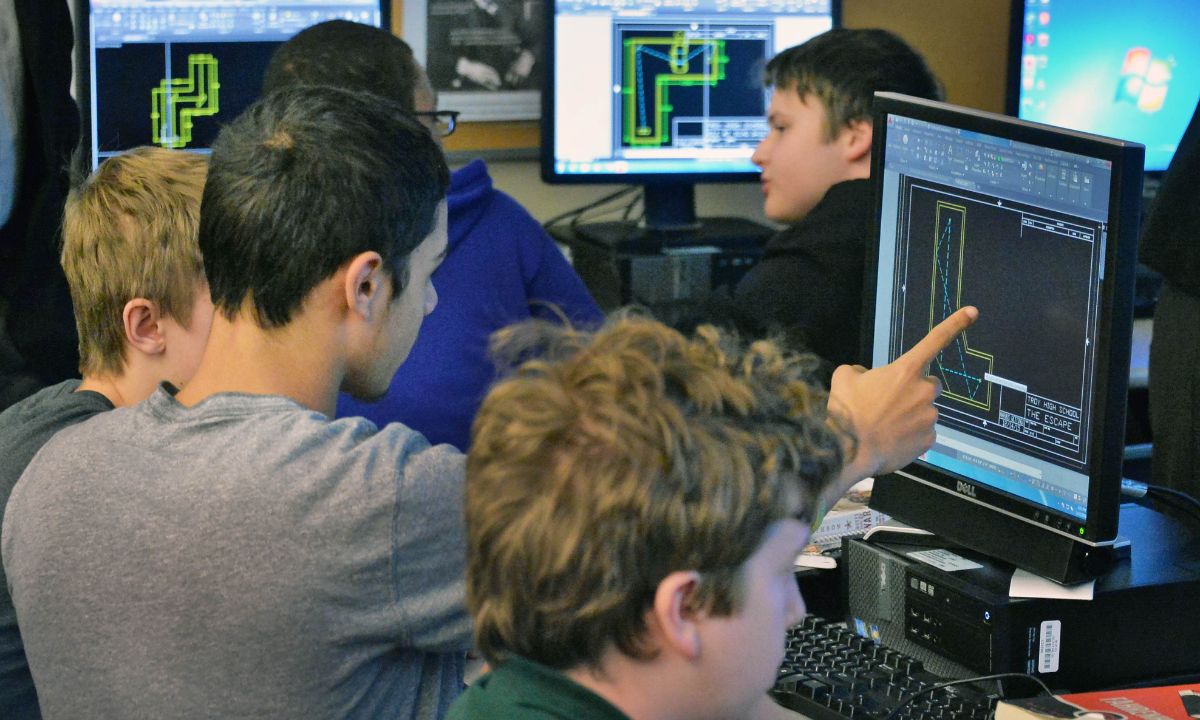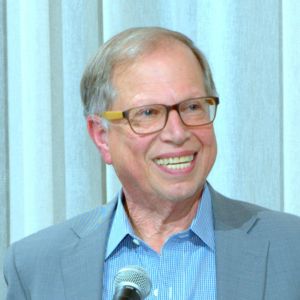Amid Chaos, There’s Still Plenty of Good News on the Path to Higher Education
Litow: Career pathways represent a bipartisan approach to supporting students through high school to college and the workforce.

Get stories like this delivered straight to your inbox. Sign up for The 74 Newsletter
We are living through an existential crisis, and it’s hard to limit the daily challenges to a single-digit set of issues. At the college level, National Institute of Health funding for vital research was halted, at least for now. K-12 schools are still making up ground from the COVID-19 disruption, and the elimination of the U.S. Department of Education is looming, threatening a range of services for our most vulnerable children. Executive orders restrict the teaching of slavery and promote funding for private school vouchers. Add to this the number of students who are not attending because of immigration enforcement.
People are exhausted and desperate for some good news. Well, we now have some.
Despite the virulent and largely inaccurate charges levied against higher education, the American public may hear it but clearly doesn’t buy into the raft of misinformation. In a recent Lumina/Gallup poll, seven out of 10 adults without a college degree believe both a bachelor’s degree and an associate’s degree are either extremely or very valuable. And despite the costs, a majority in the poll believe college will pay off within five years.
In perhaps the best piece of news, a poll of college students about the quality of their college classes found that 72% consider their classes to be either “excellent” or “very good,” and half were very confident their college education and degree would result in positive career opportunities.
This positive view of higher education also extends to seniors in high school. In 2025, the percentage of seniors who have filled out their FAFSA forms has increased by 13% over 2024, and the percentage of seniors filling out the Common App for college admissions increased by 4%, with the number of first-generation college goers increasing by 13%.
According to the National Student Clearinghouse of Research, the largest gains are among students from low-income neighborhoods. This is significant because the decline in birth rates has affected the size of the youth population. Add all of this to the fact that nationwide this past fall college enrollment was up by 3.4%, it is clear that the notion that “college doesn’t matter” has little truth.
This news is particularly important because labor market data shows that by 2031, despite the phrase “college doesn’t matter,” more than seven of every 10 jobs will require a post-secondary degree or credential. As we know, those entering the workforce with a college degree earn more than $1 million more over their lifetimes compared to those with only a high school diploma. We see growth in the semiconductor industry due to the CHIPS and Science Act, growth in health careers, green jobs, and a host of labor market areas.
This doesn’t mean our higher education systems can’t improve. They can and they must improve. The growth in micro-credentials is a significant innovation offering students an opportunity to earn industry credentials that are both credit-bearing and stackable toward a degree.
In New York State, the Power Authority, a big green jobs employer, is partnering with SUNY to not only double the number of micro-credentials for green jobs but also offer them to high school students in some of the state’s P-TECH schools, at no cost. This year Gov. Kathy Hochul announced free community college tuition for students seeking degrees in areas of labor market growth.
Other colleges and universities have begun providing an opportunity for a bachelor’s degree in three years, rather than four, reducing the time and cost of a degree. Others, including SUNY, have expanded the use of credit for prior learning, allowing military service, community service, work experience and other backgrounds to qualify students for academic credit, also reducing the cost and time of a degree.
The P-TECH approach, which offers a model of education combining high school and college via dual enrollment along with industry engagement, has spread to over 500 schools across 28 countries. It offers a clear pathway from school to college to career for students regardless of income or achievement levels. Many employers — including IBM, Cisco, Northwell Health, Micron, GlobalFoundries, and the NY Power Authority — are seeing strong results from this model. An independent evaluation by MDRC demonstrates its success, especially for low-income students and students of color.
While some of the issues involving education appear to inspire more division than unity, this isn’t the case on the need for a clear pathway from school to college to career. This is an issue that unites and doesn’t divide. It is this unity that will bring together Republican and Democrat governors, education leaders, business and labor leaders, and student representatives at the National Pathways Summit on Thursday to discuss the need for innovative paths from school to college to career.
It will take all of us — regardless of political affiliation — to achieve success for our nation. We must examine models of success together and identify ways to make them scalable and sustainable with clear solutions that include more experiential learning, career guidance and exploration, and access to academic and workplace skill development.
It is true that these are difficult and challenging times. But the good news story — about the latest poll numbers, the degree to which education leaders are willing and able to innovate and the unity demonstrated at the upcoming summit — give me some hope.
This article was published with the support of XQ Institute.
Get stories like these delivered straight to your inbox. Sign up for The 74 Newsletter

;)
